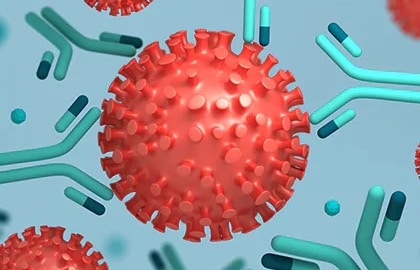Shining a Spotlight in a Challenged Market: Research Antibodies for COVID-19 Therapeutic Development
Throughout the course of the COVID-19 pandemic thus far, much of our attention at SDi has been on technologies that have benefited in the wake of the pandemic. The few bright spots in an otherwise dismal market have been technologies used in clinical diagnostic testing for COVID-19, the illness caused by the SARS-CoV-2 virus. To that end, we have discussed at length on the extraordinary growth seen for PCR and RNA sample preparation technologies. But less often discussed are the numerous technologies that are vital in the efforts against the virus, but for which COVID-19 R&D has not been enough to offset overall declines in demand. In this entry, I will highlight research antibodies, which are being used to characterize the virus and host immune response, in order to develop vaccines and therapeutics.
Immunoassays are a versatile set of tools which make use of antibodies and their ability to very specifically bind short amino acid sequences. In response to the pandemic, many suppliers have quickly developed antibodies targeting the viral proteins of SARS-CoV-2, in addition to their existing catalogues of antibodies recognizing a broader range of human coronaviruses and proteins involved in human disease response. To access host cells, coronaviruses attach to specific host cellular receptors via the viral spike protein. The SARS-CoV family of viruses enter via the angiotensin converting enzyme II (ACE-2) host cell receptor. Many of the research antibodies commercially available for SARS-CoV-2 research target either the SARS-CoV-2 spike protein, or human ACE-2.
Other antibodies are used to characterize immune response to COVID-19 infection and monitor other virus-induced responses, such as inflammation which has been identified as a major factor in patient recovery outcome. Antibodies used to study innate immune response include those targeting pattern recognition receptors and toll-line receptors, while adaptive immune response specifically against the virus is investigated using antibodies against T cell and B cell markers. Inflammatory response is gauged using antibodies against cytokines and chemokines.
Antibodies are adapted depending on the type of immunoassay being performed. Primary antibodies, which directly recognize and bind target proteins, may be used in their native state, without labels, to be indirectly detected downstream in the workflow using labelled secondary antibodies, which recognize and bind primary antibodies to amplify the signal. Visualization using secondary antibodies is common in Western blot and ELISA assays. Other assays use primary antibodies that are directly labelled. Labelling of antibodies, both primary and secondary, is achieved through conjugation, or the attachment of a tag that can be visualized to the antibody. The tag may be a fluorophore, enzyme, or protein. Common applications using conjugated primary antibodies include flow cytometry and FACS.
The market for research antibodies is examined in detail in SDi’s upcoming Global Consumables Report, which will be published in late September. The report provides market size estimates and forecasts, segmented by product types, region, end user, and application, along with information on market participants and vendor share. In addition to research antibodies, the report also covers a diverse range of consumables, with chapters covering products in chromatography, cell culture, and life sciences.


